How To Live On a Boat For Free: How I'd Do It
Living on a boat with no cost of living. Yes, a dream - but is it just that? In this article, I'll list what you'd need to do in order to make it work.
Is it possible to live on a boat for free? Theoretically, it's possible to live on a boat for free. You'll need to become self-sufficient: invest in free energy and water, find free food sources, avoid taxes; you only anchor in free locations. This is also called seasteading. In practice, it will be difficult to keep your cost of living down.
But before you go out and buy yourself a boat, it's important to know that in order to live for free, you'll need to spend upfront - Big Time. We'll go over the numbers in detail later on. But first, let's see what it means to live for free.
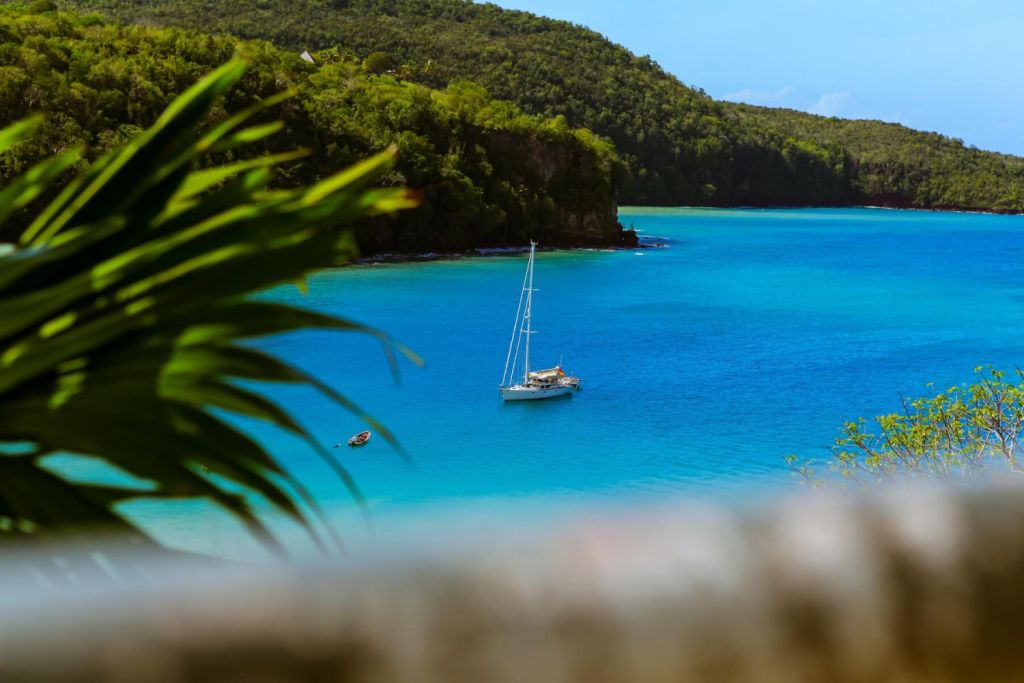
On this page:
- Get Your Cost of Living to $0
- Pick a Small Sailboat Instead of a Powerboat
- Get Solar Panels or Wind Turbines for Free Energy
- Get Free Food by Fishing and Seasteading
- Get a Watermaker for Free Water
- Pay No Taxes or Insurance
- Drastically Reduce Maintenance Cost by DIY-ing
- Moor Exclusively for Free
- Your Total Initial Cost for Living on a Boat For Free
- Your Total Cost of Living
- In Conclusion
Get Your Cost of Living to $0
When we talk about 'living on a boat for free', we mostly mean 'having no cost of living'. This means you spend $0 per month to keep your home (and yourself) up and running.
Most people would now argue that this is practically impossible. And while it is improbable, you can approach that magic number for sure. So I'd like to see how close I can get, and what that would look like in real life. But to do so, we need to tackle five major issues first.
Some of these issues are not particular to living on a boat, and will be an issue in every situation, like how to get free food. Other issues are particular to living aboard.
The five issues you need to cover are:
- you need free energy
- you need free food and water
- you need free docking or mooring
- you need to maintain your boat for free
- you need to pay no insurance or taxes
I think you can get close to zero on all five of these points. But to do so, you can be sure your upfront costs are going to be pretty high.
Upfront Costs vs. Cost of Living
Before we go on, it's important to note that you have to choose the lesser of two evils here.
You either buy a sailboat on the cheap and have higher monthly upkeep costs, or you invest heavily upfront and have no monthly recurring costs.
In this article, I'll explore the second option. Let's figure out what it would cost me to get as close as possible to $0 per month - a.k.a. 'living for free'.
So what gear would you need to make this work? You'd need to invest in the following things:
- A suitable liveaboard boat
- A solar or wind turbine system
- A watermaker
Then there are some quirky solutions we are going to explore for tackling the rest of the problems:
- Free maintenance - start with a solid boat and DIY your way through it
- Free docking - use free moorings and international waters
- Free (or no) insurance and taxes - move to states that don't charge property tax
- Ocean homesteading skills to get free food
The most difficult ones to figure out are free mooring and free food. For most scenarios, docking your boat would be the most costly expense. And free food is hard to get by, wherever you are. But there are ways around it that have been used for ages.
But first, let's get rid of the following recurring costs straight away.
The Cost of Owning a Boat on the Cheap
I've previously done research on the cost of owning a sailboat. I've crunched a lot of numbers and created a kind of 'budget' scenario - the absolute minimum monthly budget for owning a sailboat. The numbers looked like this:
| Recurring Costs: | Cost |
|---|---|
| Mooring at $5/ft | $130 |
| Insurance | $150 |
| Maintenance | $1,000 |
| Fuel | $100 |
| Taxes | varies |
| Total cost per year | $1,380 |
| per month | $115 |
We could probably ditch the insurance, taxes, and mooring straight away.
This brings our monthly cost down to about $92 / month.
If you want to save on maintenance, however, you should be prepared to go the extra mile. More on this later.
Pick a Small Sailboat Instead of a Powerboat
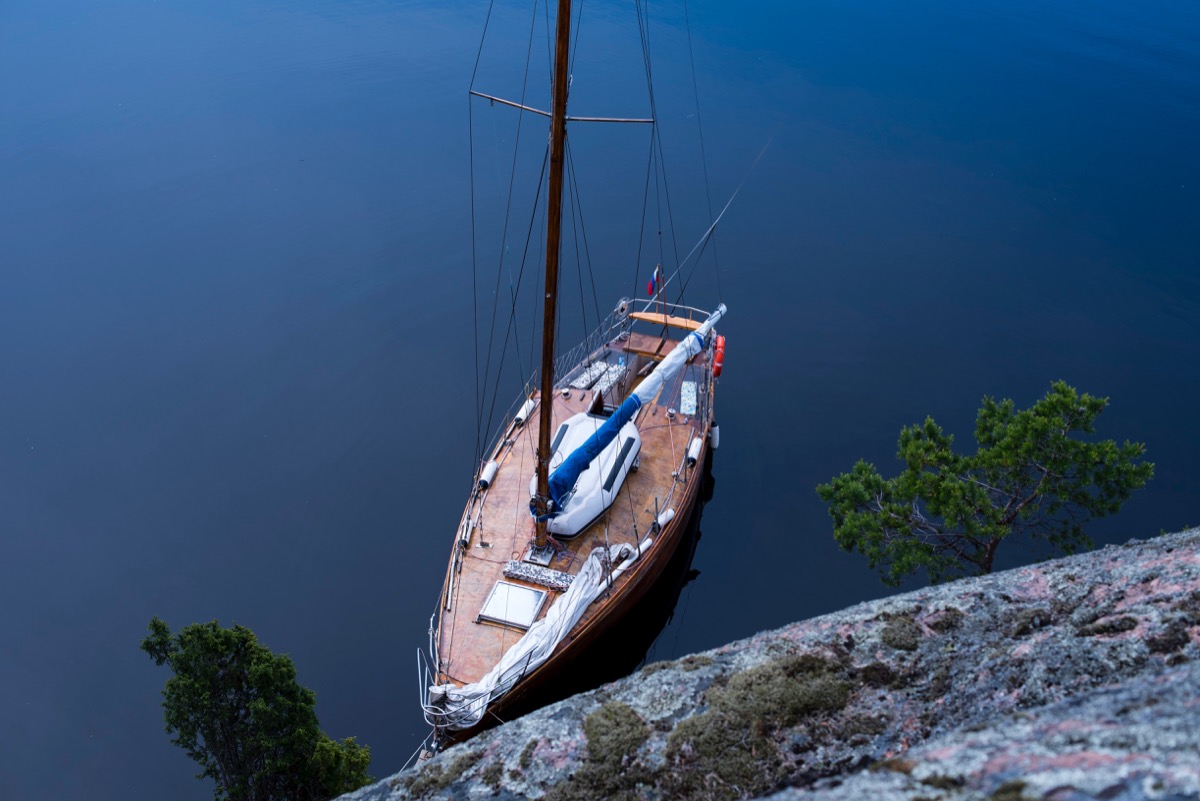
If you're planning on cruising and moving around a lot, I'd definitely consider picking a sailboat for my liveaboard.
Fuel is expensive, and motorboats use A LOT of it. But if you know how to sail, you can go anywhere at absolutely no cost, if you have the time. The wind is free, after all.
If you're interested in learning to sail right away - and cheaply - read my article How To Learn to Sail for Practically Free here - opens in new tab.
Sailboats are notoriously expensive. However, you can get a good second-hand sailboat for a reasonable price. I've researched sailboat prices in-depth for another article. Here's what I came up with:
The Average Cost of Buying a Sailboat
| boat | price class | one-time cost |
|---|---|---|
| Island Packet 26' | medium | $25,000 |
| Catalina 22' | low budget | $2,500 |
| Ocean cruiser 35' | low budget | $38,000 |
| Luxury yacht 40' | expensive | $166,000 |
Source: Average Cost of Buying & Owning a Sailboat (With 4 Examples)
Wooh - just $2,500? Yes, it's for real. However, for that kind of money, you'll buy yourself a project.
To keep your maintenance cost down, I suggest buying something in the $20,000 - $30,000 price range. So I'll just put down $25,000 for the boat, as that is what I've found on Craigslist.
Get Solar Panels or Wind Turbines for Free Energy
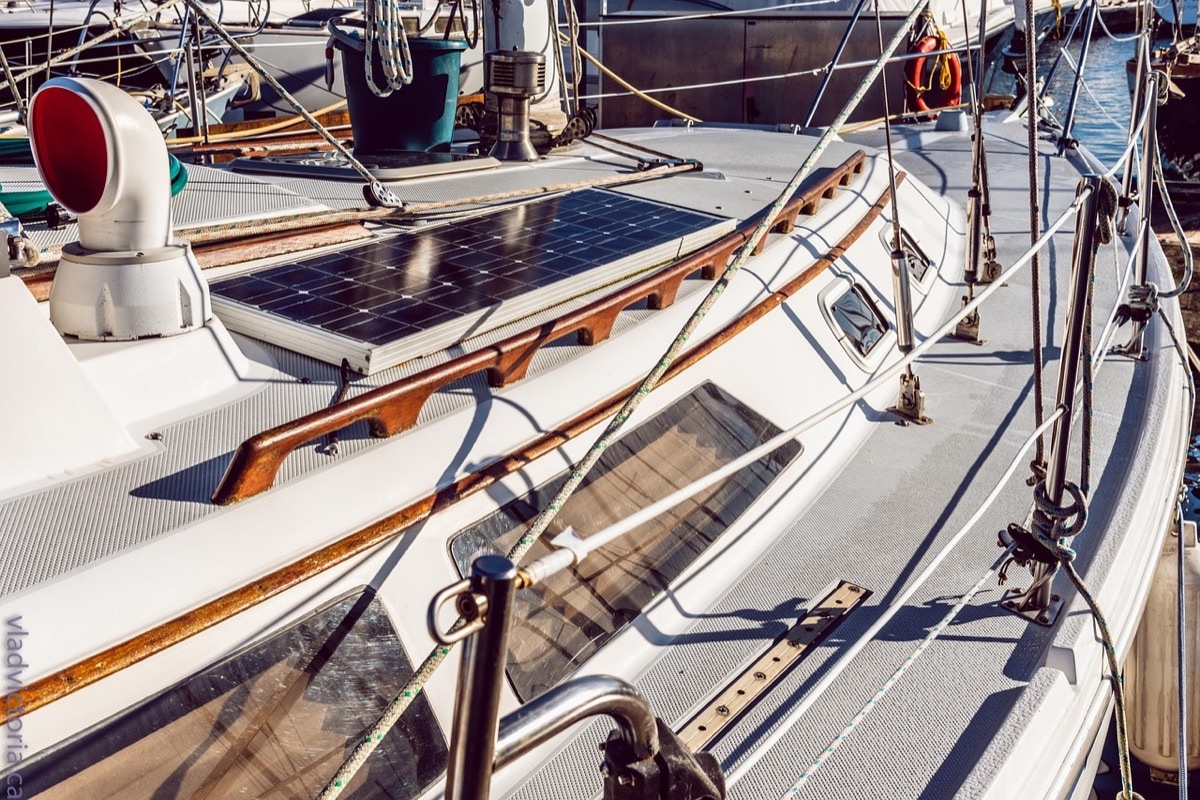
If you want free energy, solar is the way to go (in my opinion). Of course, it isn't free, as you need to buy the system upfront. But after the initial investment, your upkeep cost is pretty low.
Over the last years it has become very affordable. Especially for sailboats - today's solar panels are incredibly well-equipped to power small living spaces.
I've researched what solar system I need. I don't use a lot of energy on a daily basis. I just charge two laptops and some phones, and run the lights and fan.
All in all, I'd only need the setup below. Any decent-sized solar system will cost you about $ 1000.
| Item | Cost |
|---|---|
| 150Wp Solar Panel | $ 200 |
| Marine Batteries 210Ah | $ 400 |
| MPPT Solar charger | $ 200 |
| Wiring and fuses | $ 200 |
| Total | $ 1000 |
Another option is wind turbines. These are less popular, but I've seen cruisers using them. I think they're too big and ugly for my taste.
Get Free Food by Fishing and Seasteading
Free food source #1 - Fishing
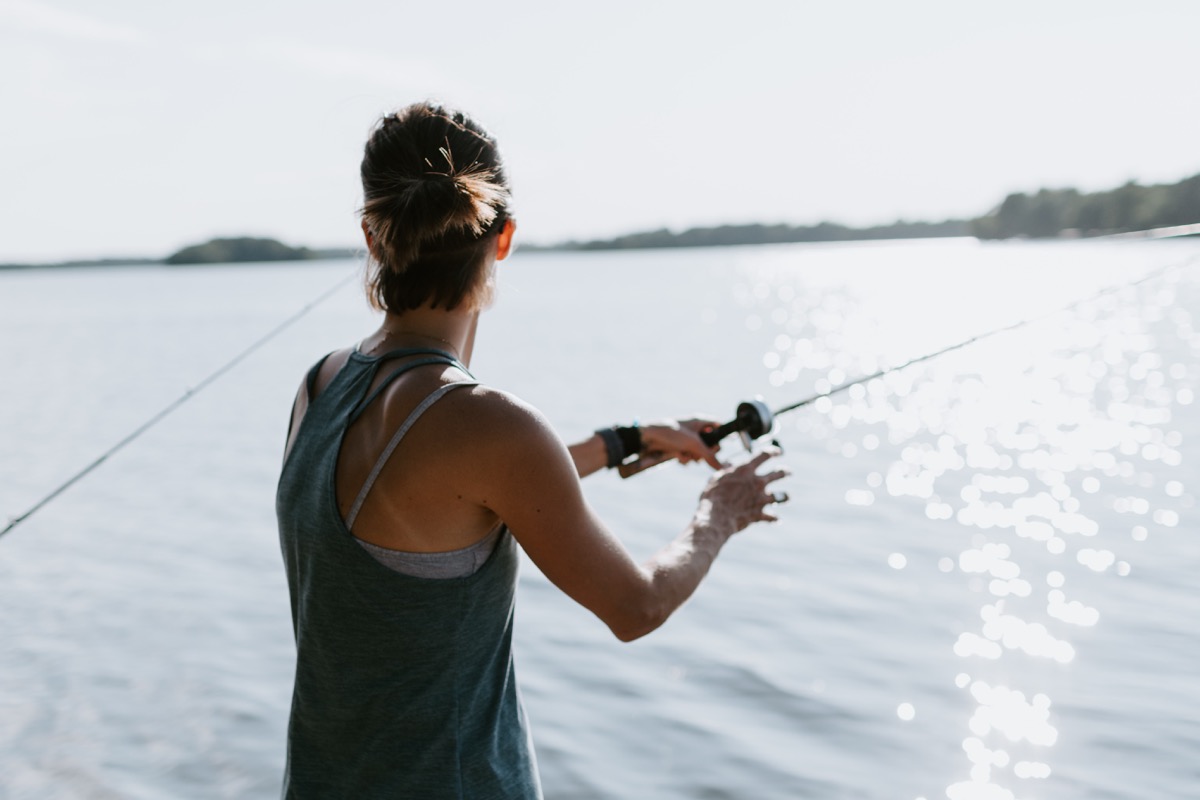
Free food is difficult everywhere. Unless you harvest your own vegetables, free food seems to be impossible to get by. But a boat offers a couple of great free food sources. The most obvious being: fishing.
If you put in the effort and make a habit out of putting out your lines, it's very realistic to get most of your proteins from free fish.
Tip: invest in a chartplotter that also has a fishfinder. It takes the sport out of it but makes it extremely easy to catch large amounts of fish. Nowadays, this kind of technology isn't very expensive anymore. I recommend a simple chartplotter with echo (opens in new tab).
Free food source #2 - Seasteading
Another good source of free food is having your own sailboat garden. Sailboat homesteading, a.k.a. seasteading. At first, I thought this would be impossible, especially in saltwater conditions.
Your two challenges are:
- you can only have a thin layer of soil because of the weight
- your vegetables have to deal with saltwater
However, there are plenty of vegetables and herbs that will do pretty well in saltwater air. You can also find a lot of small-root vegetables. Tomatoes are a good example.
Turning your deck into a decent-sized vegetable garden can definitely be done. It takes a little practice, though.
If you want to get started: Ken Neumeyer wrote the manual on the topic, called Sailing the Farm: A Survival Guide to Homesteading on the Ocean.
Get a Watermaker for Free Water
To cover your daily water usage, I'd suggest a watermaker. Watermakers are expensive (and quite big and a hassle to install). But once your watermaker is up and running, you'll have free filtered water for at least the coming 5 - 10 years.
Quality watermakers start at around $2,000.
Pay No Taxes or Insurance
No Taxes
There are basically three types of boat taxes:
- Sales tax - pay once in the state you're buying a boat
- Use tax - pay in the state you're using a boat
- Property tax - pay in the state you own the boat
Some states don't have a sales tax, others don't have a use tax, and in some locations, you don't pay property tax. So moving (or buying) your boat there can greatly help to get your monthly costs to $0.
Here are the states that don't have a recurring tax (use or property):
- Alabama
- Connecticut
- Delaware (also no sales tax)
- District of Colombia (also no sales tax)
- Florida
- Maryland
- New Hampshire
- New York
- Pennsylvania
- Rhode Island (also no sales tax)
- South Carolina
- US Virgin Islands (also no sales tax)
No Insurance
Boat insurance isn't required in most U.S. states. It's entirely up to you whether you insure your boat or not.
Drastically Reduce Maintenance Cost by DIY-ing
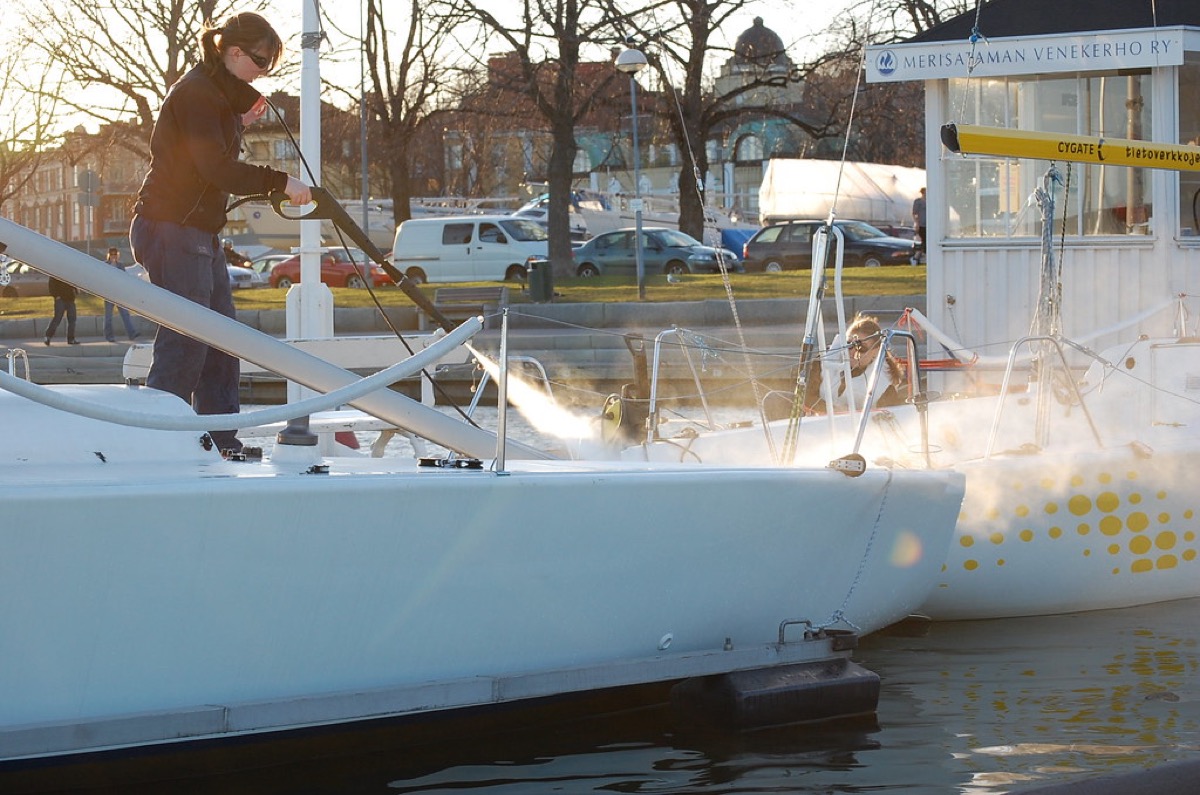
Okay, I've got to be straight with you here. Boats need a lot of maintenance. We can't maintain the boat for zero dollars. So this is where the dream dies (just a little).
If we're serious about living on the cheap, we want to account for maintenance costs. I'm tempted just to ignore maintenance altogether. With neglected maintenance, however, there is always just one possible outcome: it will be more expensive and more work down the line.
So we need to acknowledge these inevitable recurring costs here - and find a way to drastically reduce them.
There are two things you can do:
- Start with a solid boat - this means you pay a lot more upfront, but you don't have to worry about standing rigging, sails, and so on for some time to come.
- Do your own maintenance
So, let's say we're able to do both. What would our maintenance cost look like?
Here's a complete overview of maintenance costs:
| Part | Replace every | Cost |
|---|---|---|
| Engine | 20 years | $5,000 |
| Standing rigging | 10 years | $4,000 |
| Running rigging | 5-10 years | $5,000 |
| Sails | 5-10 years | $2,000 - $5,000 |
| Safety equipment | 10 years | $500 |
| Batteries | 4-6 years | $600 |
| Deck hardware | 20-30 years | $1,500 |
| Bottom paint | 2 years | $500 |
| Avg. cost per year | $1,730 |
If you're very disciplined at maintaining the boat, you could increase the life span of the most costly replacements - your engine, rigging, sails and deck hardware. This means you flush, clean and oil your engine very frequently and do rust prevention on all your hardware (all the time). You repair your own sails and do your own antifouling and bottom cleaning.
Let's say you manage to increase the life span for all of these by 30%. Your average maintenance cost per year would be between $1,000 - $1,500 / year.
Moor Exclusively for Free
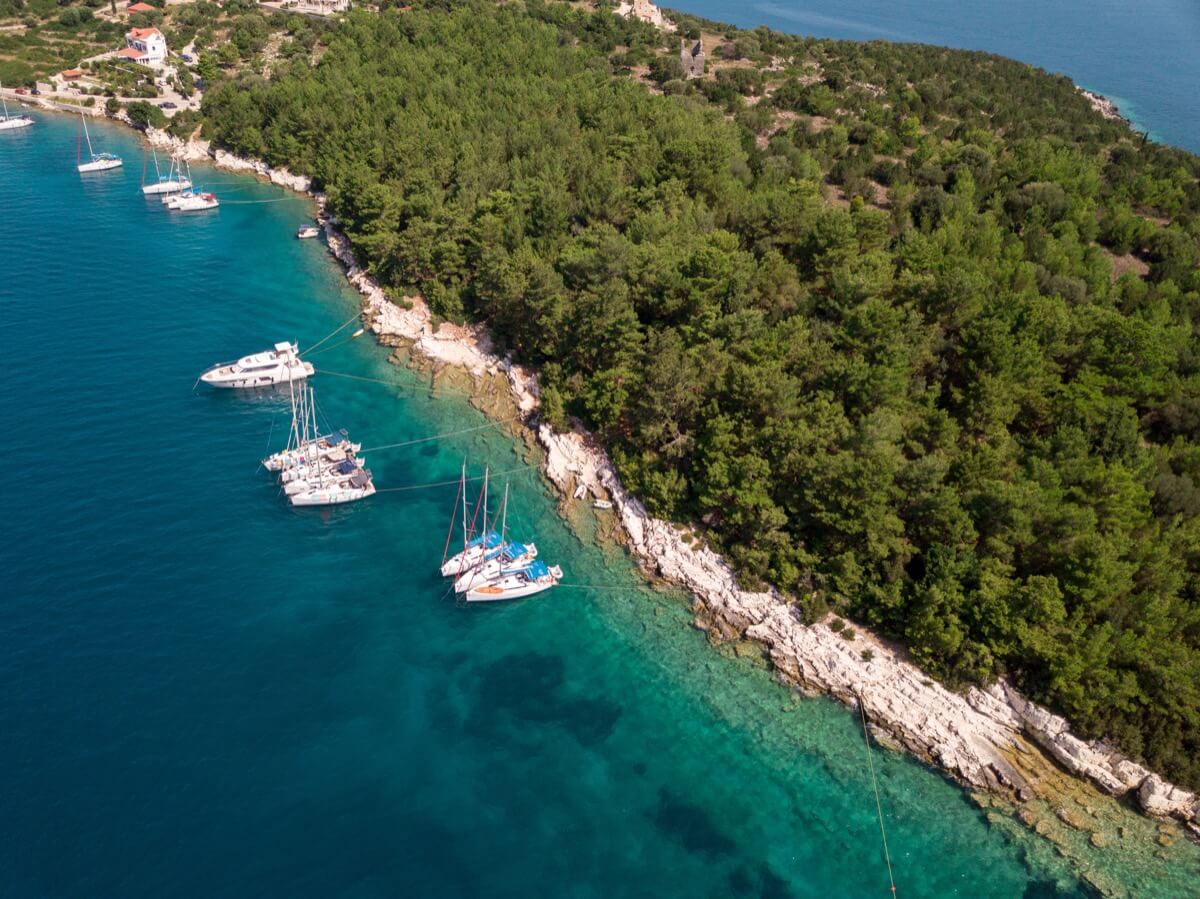
Free mooring is definitely possible. However, you need to be willing to compromise. Docking in a marina can get expensive very quickly, so I'd want to avoid that as much as possible.
There are plenty of free (or very cheap) anchorages all over the world. Sometimes you can only stay there for a brief period, like one or two nights. It'd keep moving from free anchorage to anchorage, with the usual boondocking in between.
This does have two large disadvantages:
- you'll have to keep moving
- there are no utilities in these locations
If you want to learn more on where you can moor your boat for free, I recommend reading William's article here (opens in new tab).
Your Total Initial Cost for Living on a Boat For Free
So let's add up all the costs we need to make before we can start living for free.
| Solution | Cost |
|---|---|
| Solid sailboat | $25,000 |
| Solar system | $ 1,000 |
| Chartplotter | $500 |
| Fishing equipment | $200 |
| Vegetable garden | $200 |
| Watermaker | $2,000 |
| Dinghy | $500 |
| Total | $29,500 |
Your Total Cost of Living
Now let's see how close we came to our goal: living for free.
Our monthly recurring cost will be somewhere between $200 - $500.
Now I know that isn't free, but it sounds nearly as good to me.
The truth is, some costs just can't be avoided. If you invest in homesteading, you can reduce most of your costs drastically. But in turn you'll need to maintain your homesteading systems.
| Expense | Cost |
|---|---|
| Maintenance | $115 |
| Fuel | $10 |
| Canned food | $50 |
| MiFi | $20 |
| Total | $195 |
In Conclusion
I think the easiest way to live on a boat for free is the cruising lifestyle. You'd be in international waters most of the time, or far away from crowded and touristy regions. This means your cost of living goes down dramatically. But you'd need to know how to sail and would need to be pretty skilled at it as well.
Ready to learn to sail? Want to learn it for free? Read my article 9 Ways To Learn to Sail for Practically Free here.
Did you find the answer to your specific question?
👍 51 👎 3
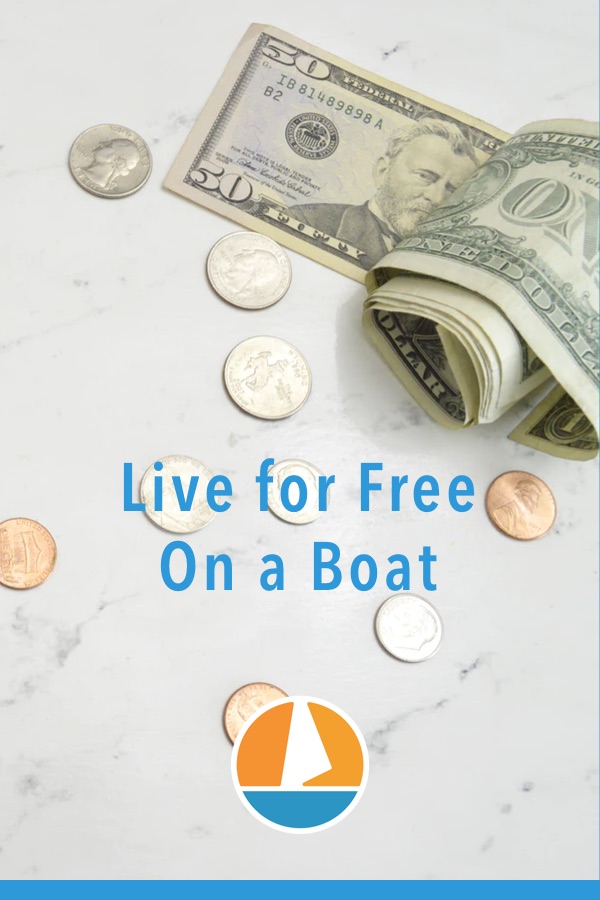
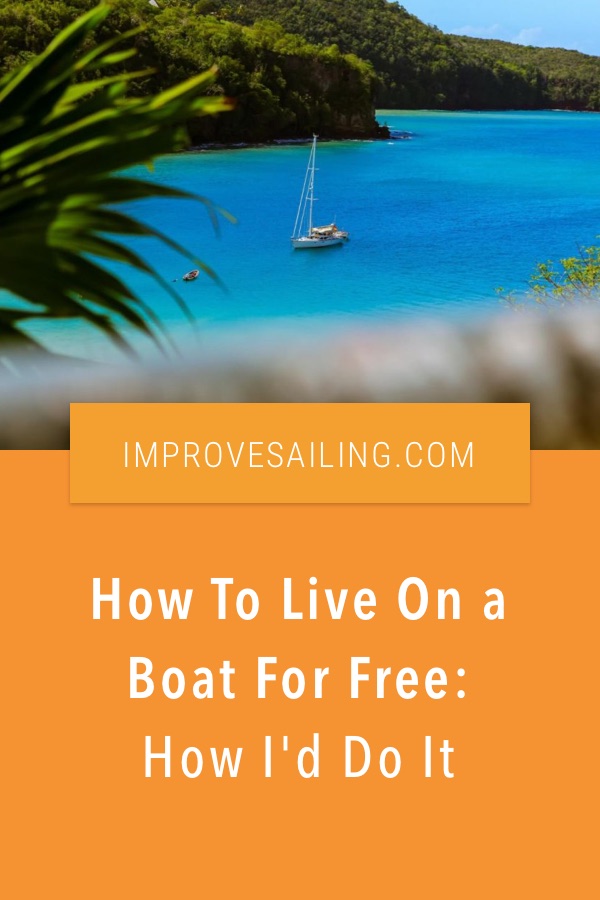

Comments
Leo Potter Sr
Great information, have you been to Aalsmeer by any chance?
Leave a comment